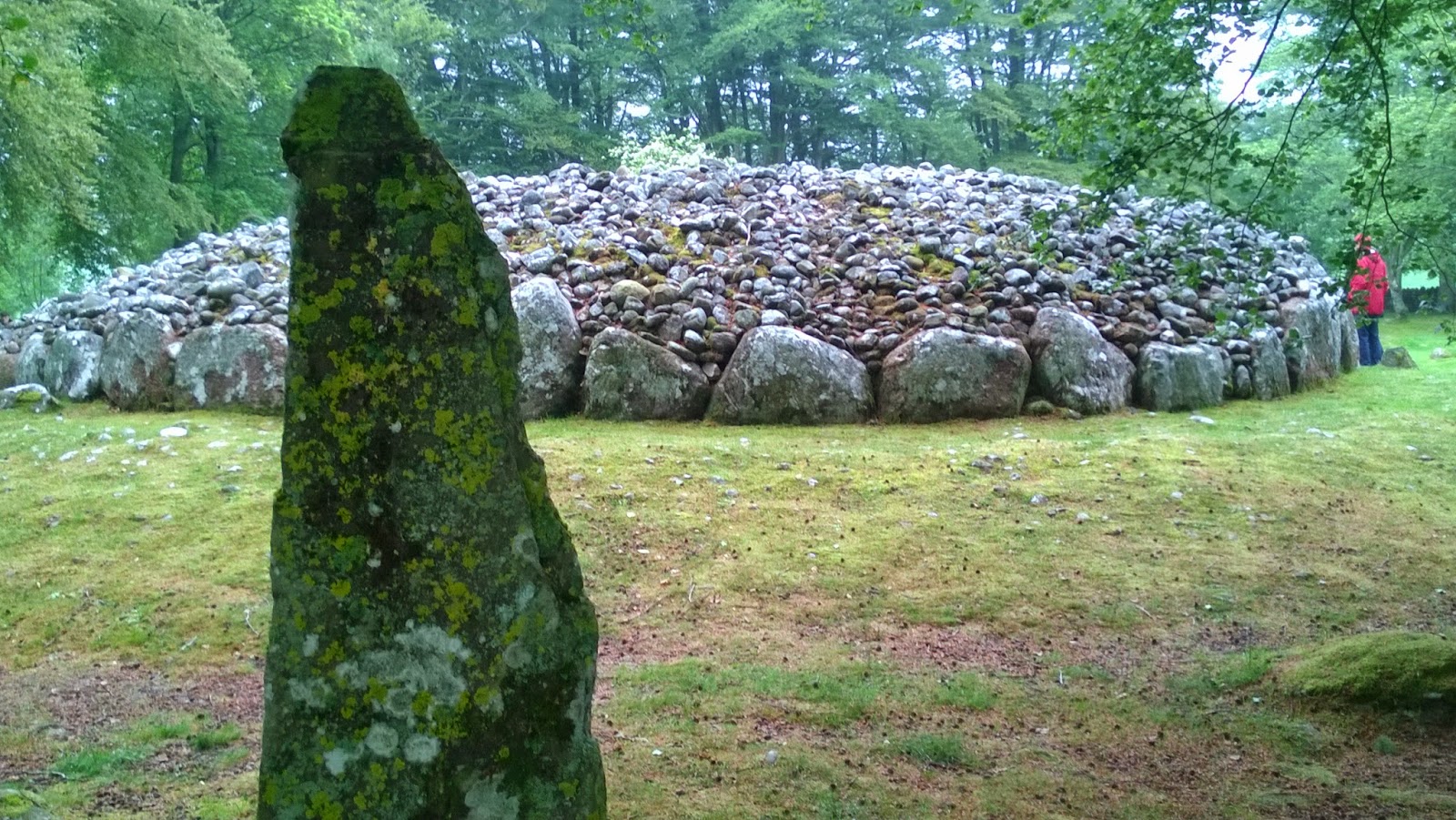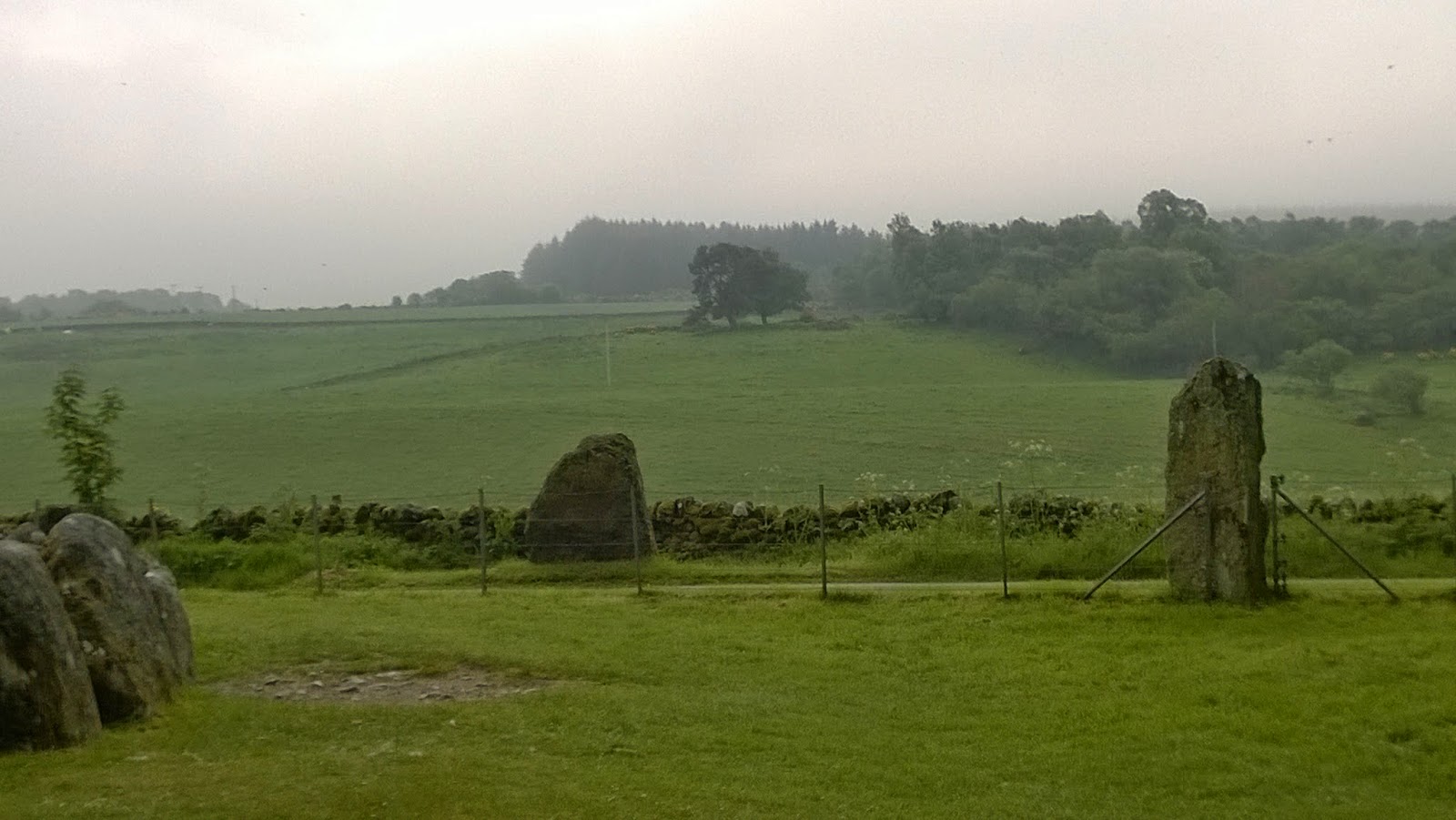 |
| N.E. Passage Cairn from east |
On our recent trip to Scotland, I knew little of Scotland's prehistoric past. It was thrilling to visit this prehistoric burial site with standing stones, which is properly called the Prehistoric Burial Cairns of Balnuaran of Clava. It's beside a one-lane rural road not far from the Culloden Battlefield. Few people visited it while we were there, making it possible to admire the work that went into building the passage grave below.
 |
| S.W. Passage Cairn |
There are three cairns, each one was surrounded by standing stones - as many as nine.
And, yes, the monument is aligned on the midwinter solstice. In recent years this phenomenon has been observed by covering the chamber and passage with tarpaulin. This showed that on a clear day the rays of the setting sun travel down the passage and divide the chamber in half.
A beam of intense light focuses on the back wall. The same effect would have been visible in the south-west cairn where the view is obstructed by a modern farmhouse. So, the Victorians, thinking this had been a druid place, planted trees to give it a wooded look. Which certainly does add to the atmosphere.
 |
| With woodland toadstools |
What draws your attention toward the end of your walk-around is the split stone (or were two placed against each other originally and have slipped apart?
 |
| Who cannot resist having her picture taken between the stones? |






Powerful, Karen. Thinking about the history gives me chills. Great pictures.
ReplyDelete